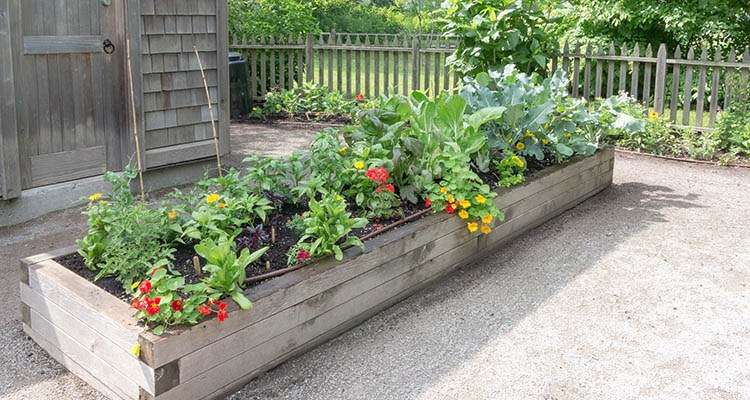Hello there! In this article, we’ll be discussing whether or not raised beds need a liner. We’ll explore the benefits of using a liner in your raised bed, as well as the potential drawbacks. Whether you’re an avid gardener or interested in off-grid living, this topic is sure to pique your interest. So, let’s dive in and find out if a liner is needed for your raised beds!
Do Raised Beds Need a Liner?
When it comes to gardening, raised beds have become increasingly popular. They offer a range of advantages such as improved soil quality, better drainage, and easier maintenance. But one common question that arises is whether or not raised beds need a liner. In this article, we will explore the advantages of using a liner in raised beds, the different types of liners available, considerations before using a liner, alternative methods to line raised beds, how to install a liner, common mistakes to avoid, comparing liner options, expert opinions on liner usage, real-life examples, alternatives to using liners, and finally, we will conclude with some key takeaways.
Advantages of Using a Liner in Raised Beds
Reduced Weed Growth
One of the main advantages of using a liner in raised beds is that it can help reduce weed growth. By creating a barrier between the soil and the outside environment, liners prevent weed seeds from taking root and spreading throughout the raised bed. This can save you a significant amount of time and effort in weed control, allowing you to focus on other aspects of gardening.
Improved Water Retention
Another benefit of using a liner in raised beds is improved water retention. Liners help to hold moisture in the soil, reducing the need for frequent watering. This is especially beneficial in drier climates or during periods of drought when water conservation is crucial. Additionally, liners can prevent excessive water loss through evaporation, ensuring that your plants receive an adequate water supply.
Protection Against Soil Erosion
Liners can also provide protection against soil erosion in raised beds. By minimizing the direct contact between the soil and external elements, such as wind and heavy rain, liners help to keep the soil in place and prevent it from being washed away. This is particularly important if you have elevated or sloping beds where erosion is more likely to occur.
Enhanced Pest Control
Using a liner in raised beds can also aid in pest control. Liners act as a physical barrier that can deter certain pests, such as slugs and snails, from accessing your plants. Additionally, liners can prevent burrowing animals, like rodents, from tunneling into the beds and damaging the roots of your plants. By minimizing the risk of pest infestations, you can protect your crops and promote healthier, more abundant harvests.
Types of Liners for Raised Beds
There are several types of liners available for use in raised beds. Each type has its own set of advantages and considerations, so it’s important to choose the one that best suits your gardening needs. Here are some of the most common types of liners:
Plastic Liners
Plastic liners are a popular choice for raised beds due to their affordability and ease of installation. They are typically made from durable materials, such as polyethylene or PVC, which can withstand exposure to the elements. Plastic liners provide excellent weed control and moisture retention, making them suitable for a wide range of plants. However, they can degrade over time under harsh sunlight and may not be the most environmentally friendly option.
Landscape Fabric Liners
Landscape fabric liners are permeable materials that allow water and air to pass through while blocking weed growth. They are typically made from woven or non-woven polypropylene and are known for their durability and resistance to tearing. Landscape fabric liners provide good water drainage and help retain moisture in the soil. They are a popular choice among gardeners who prioritize weed control and water conservation.
Cardboard Liners
Cardboard liners are a more sustainable and biodegradable option for lining raised beds. They are readily available, cost-effective, and easy to install. Cardboard liners provide good weed suppression and can be particularly useful for smaller raised beds or temporary planting areas. However, they may break down faster than other types of liners, especially in wet conditions.
Copper Liners
Copper liners are an alternative option for raised bed liners. Copper has natural antimicrobial properties that can help prevent the growth of bacteria and fungi in the soil. This can be particularly beneficial for plants that are susceptible to root diseases. Copper liners are also known for their durability and resistance to corrosion. However, they can be more expensive compared to other types of liners and may not be suitable for all gardeners.
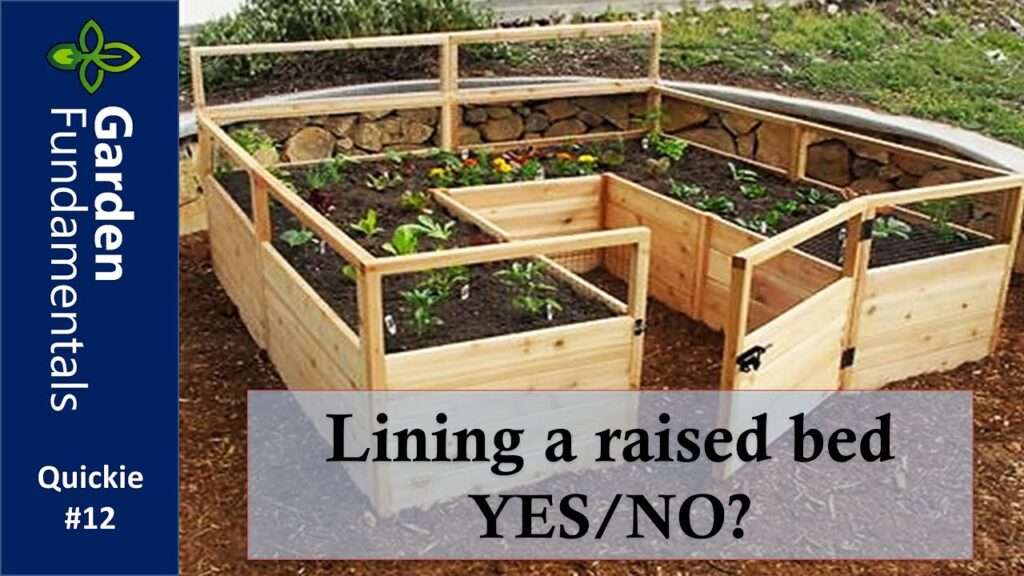
Considerations Before Using a Liner
Before deciding to use a liner in your raised beds, there are several considerations to keep in mind. These factors can impact the effectiveness and practicality of using a liner in your specific gardening situation. Here are some key considerations:
Soil Drainage Requirements
One important consideration is the drainage requirements of your plants. While liners can help retain moisture in the soil, they can also hinder drainage if not properly installed or if drainage holes are not provided. Some plants, such as succulents or herbs, prefer well-drained soil and may not thrive in overly moist conditions. It’s essential to strike a balance between water retention and proper drainage to ensure the health of your plants.
Safety Concerns for Food Crops
If you plan to grow food crops in your raised beds, it’s important to consider any potential safety concerns associated with using certain types of liners. Some liners may contain chemicals or additives that can leach into the soil and be absorbed by edible plants. It’s advisable to choose food-safe liners or opt for alternative methods if you have concerns about the potential impact on your harvest.
Potential for Liner Degradation
Another consideration is the potential degradation of the liner over time. Some liners, such as plastic ones, can degrade under sunlight exposure or due to contact with certain chemicals or fertilizers. This degradation can affect the integrity of the liner and may require replacement after a certain period. It’s important to choose a liner that is durable and suitable for long-term use, or be prepared for regular maintenance and replacement if necessary.
Maintenance and Replacement Costs
The cost of maintenance and replacement is an important factor to consider. Depending on the type of liner you choose, there may be ongoing costs associated with maintaining or replacing the liner as needed. For example, plastic liners may require periodic replacement due to degradation, while cardboard liners may need to be replaced more frequently if they start to break down. It’s essential to factor in these costs when deciding whether or not to use a liner in your raised beds.
Alternative Methods to Line Raised Beds
While using a liner in raised beds offers several benefits, it might not always be necessary or suitable for every gardener. If you prefer not to use a liner, there are alternative methods available that can still help you achieve similar outcomes. Here are some alternative methods to consider:
Mulching the Bed Surface
Mulching the surface of your raised beds is a natural and effective way to suppress weed growth, conserve moisture, and protect the soil. Organic materials, such as straw, wood chips, or shredded leaves, can be spread evenly over the bed surface to create a protective layer. Mulch not only helps prevent weeds from germinating but also helps regulate soil temperature and moisture levels. It also gradually breaks down over time, enriching the soil with organic matter.
Installing a Gravel Layer
Installing a gravel layer at the bottom of your raised beds can enhance drainage and prevent soil compaction. The gravel layer acts as a reservoir for excess water, preventing it from pooling at the bottom of the bed and causing root rot. It also provides a barrier between the soil and the external environment, reducing the risk of erosion. However, it’s important to choose a gravel size that allows for proper water flow and does not impede root growth.
Applying Compost Directly
Applying compost directly to the soil in your raised beds is an excellent way to improve soil fertility and structure. Compost is rich in nutrients, beneficial microorganisms, and organic matter that can support plant growth and suppress weeds. By regularly adding compost to your beds, you can create a nutrient-rich environment that promotes healthy plant development. Compost also helps retain moisture in the soil, reducing the need for additional watering.
Utilizing Natural Weed Suppression Techniques
In addition to the above methods, you can also utilize natural weed suppression techniques to keep your raised beds weed-free and healthy. These techniques include hand weeding, using organic herbicides, or practicing crop rotation. By regularly inspecting your beds and removing any weeds as they appear, you can prevent them from spreading and competing with your plants for nutrients and water. Additionally, rotating your crops can disrupt the life cycle of pests and diseases, reducing the need for synthetic pesticides.

How to Install a Liner in Raised Beds
If you decide to use a liner in your raised beds, here are some steps you can follow to ensure a proper installation:
Measure and Cut Liner to Fit
Measure the dimensions of your raised bed and cut the liner to fit. Leave some extra material around the edges to ensure a secure fit. It’s important to choose a liner size that covers the entire interior of the bed, extending up the sides if desired.
Secure Liner to the Bed Walls
Once the liner is cut to size, carefully place it in the raised bed, ensuring that it covers the bottom and sides. Secure the liner to the bed walls using staples, nails, or clips to keep it in place.
Create Drainage Holes
To ensure proper drainage, create drainage holes in the liner if it is impermeable. These holes will allow excess water to flow out of the raised bed, preventing waterlogging and root rot. Use a sharp object, such as a knife or drill, to make the holes at regular intervals along the bottom of the bed.
Cover Liner with Soil or Mulch
Once the liner is securely in place and drainage holes are created, you can cover it with a layer of soil or mulch. This will help anchor the liner and provide a more natural appearance. The soil or mulch will also help retain moisture and protect the liner from potential damage.
Common Mistakes to Avoid When Using Liners
While using a liner in raised beds can be beneficial, there are a few common mistakes that gardeners should avoid. By being aware of these mistakes, you can ensure a successful outcome for your raised bed garden. Here are some common mistakes to avoid:
Choosing the Wrong Type of Liner
Choosing the wrong type of liner for your specific gardening needs can lead to ineffective results or unnecessary maintenance. It’s essential to consider factors such as durability, water permeability, and compatibility with your plants before selecting a liner. Take the time to research and compare different options to make an informed decision.
Not Properly Preparing the Bed
Neglecting to properly prepare the bed before installing the liner can cause problems down the line. It’s important to clear the bed of any weeds, rocks, or debris that could puncture or damage the liner. Additionally, ensure that the bed walls are sturdy and adequately supported to prevent the liner from sagging or tearing.
Neglecting to Monitor Soil Moisture Levels
While liners help retain moisture in the soil, it’s still important to regularly monitor soil moisture levels and adjust watering techniques accordingly. Overwatering can lead to root rot or fungal diseases, while under-watering can cause plants to wilt and fail to thrive. Use a moisture meter or perform a simple finger test to determine the moisture level of the soil.
Forgetting to Adjust Watering Techniques
Using a liner in raised beds can affect the way water is distributed and absorbed by the soil. It’s important to adjust your watering techniques to ensure that the plants receive adequate moisture without causing waterlogging. Consider watering from the base of the plants or using a drip irrigation system to deliver water directly to the root zone.
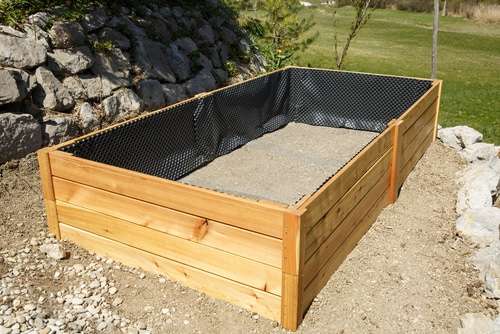
Comparing Liner Options for Raised Beds
When choosing a liner for your raised beds, it’s helpful to compare different options based on certain criteria. Here are some factors to consider when comparing liner options:
Durability
Consider the durability of the liner and how well it can withstand exposure to the elements, including sunlight, moisture, and temperature fluctuations. A durable liner will last longer and require less frequent replacement.
Cost-Effectiveness
Evaluate the cost of the liner and any associated maintenance or replacement costs. While some liners may have a higher upfront cost, they may prove more cost-effective over time due to their durability and longevity.
Environmental Impact
Assess the environmental impact of the liner material. Some liners may be more eco-friendly than others, such as biodegradable options or those made from recycled materials. Consider the sustainability of the liner and its potential long-term impact on the environment.
Aesthetics
Consider the aesthetic appeal of the liner when installed in your raised beds. Some liners may have a more natural appearance, while others may be more visible or have a specific color or pattern. Choose a liner that complements the overall design and visual appeal of your garden space.
Expert Opinions on Liner Usage
To gather a more comprehensive understanding of whether or not raised beds need a liner, it’s helpful to consider the opinions and experiences of gardening experts. Their insights can provide valuable guidance when making your own decision. Here are some expert opinions on liner usage:
Views from Professional Gardeners
Professional gardeners often have extensive experience working with raised beds and can offer valuable insights into the benefits and drawbacks of using a liner. Many professional gardeners advocate for using a liner to maximize weed control and improve water retention, especially in situations where raised beds are exposed to harsh weather conditions.
Advice from Horticultural Experts
Horticultural experts can provide technical knowledge and recommendations based on scientific research and experimentation. They often emphasize the importance of proper drainage, soil aeration, and choosing a liner material that is compatible with your specific gardening needs.
Opinions from Organic Farming Advocates
Organic farming advocates typically prioritize sustainability and natural practices. Some advocates may discourage the use of liners as they believe in creating a more holistic and self-sustaining ecosystem within raised beds. They may instead recommend alternative methods, such as incorporating organic matter or implementing natural pest control techniques.
Experiences of Experienced Garden Enthusiasts
Experienced garden enthusiasts can provide valuable insights based on their own personal experiences with raised beds and liner usage. They often share practical tips and lessons learned from trial and error. Their experiences can serve as a valuable resource when making decisions about liner usage in your own garden.
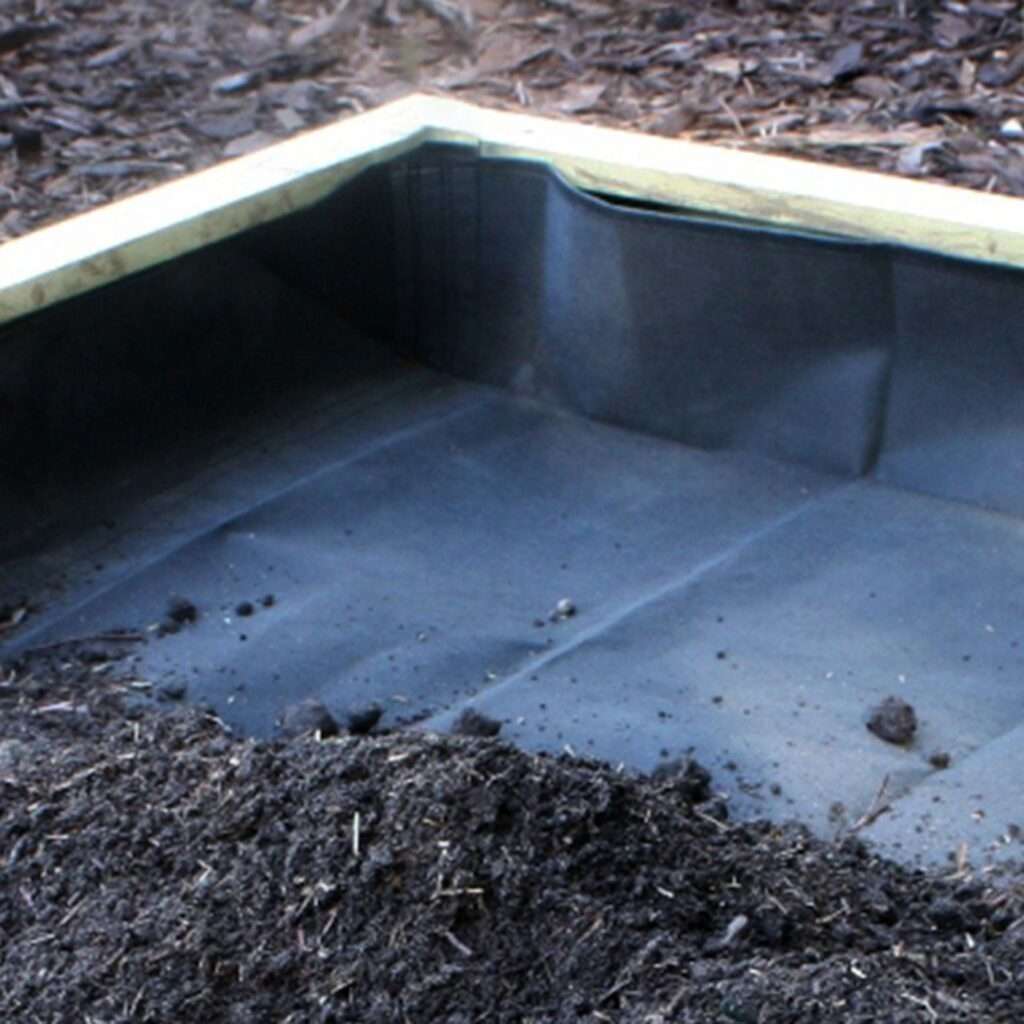
Real-Life Examples of Liner Use in Raised Beds
To further illustrate the practical application of liners in raised beds, let’s consider a few real-life examples:
Success Stories from Home Gardeners
Many home gardeners have reported success in using liners in their raised beds. They have observed reduced weed growth, improved water retention, and better overall plant health. Some gardeners have even noticed increased productivity and yield from their edible crops.
Community Garden Projects
Community garden projects often utilize liners in their raised beds to ensure consistent and efficient management. Liners help reduce maintenance requirements and provide a more structured gardening environment, making it easier for community members to participate and maintain their individual plots.
Educational Institution Initiatives
Educational institutions, such as schools or universities, often use liners in their raised beds as part of hands-on learning initiatives. Liners help facilitate a controlled and manageable gardening experience for students of all ages, allowing them to learn about plant growth, soil health, and environmental concepts.
Urban Gardening Initiatives
Urban gardening initiatives frequently incorporate liners in raised beds due to space constraints and potential soil contamination risks. Liners provide an additional layer of protection against pollution and ensure a clean gardening environment for urban dwellers.
Alternatives to Using Liners in Raised Beds
If using a liner in your raised beds doesn’t align with your gardening preferences, there are alternative methods you can consider. These methods can still help you create healthy and productive raised beds without the use of a liner. Here are some alternatives to using liners:
Integrating Composting Techniques
Integrating composting techniques into your raised beds can significantly enhance soil fertility and structure. Compost adds organic matter, nutrients, and beneficial microorganisms to the soil, promoting healthy plant growth and reducing weed competition. By regularly incorporating compost into your beds, you can build a rich, self-sustaining soil ecosystem.
Implementing Water-Efficient Strategies
Implementing water-efficient strategies, such as drip irrigation or mulching, can help conserve water in your raised beds. Drip irrigation delivers water directly to the plant roots, minimizing water loss through evaporation and ensuring efficient water distribution. Mulching, as mentioned earlier, provides a protective layer that helps retain moisture in the soil and reduces the need for frequent watering.
Building Self-Maintaining Soil Structures
Building self-maintaining soil structures, such as lasagna gardens or hugelkultur beds, can eliminate the need for liners while promoting healthy soil conditions. Lasagna gardens involve layering organic materials, such as leaves, compost, and straw, to create a nutrient-rich and self-watering bed. Hugelkultur beds utilize decomposing wood logs or branches as a base, which not only provides a long-lasting source of nutrients but also retains moisture due to their high water-holding capacity.
Adopting Companion Planting Methods
Companion planting involves strategically planting compatible crops together to maximize their growth and deter pests. By choosing plant combinations that complement each other in terms of nutrient requirements, pest resistance, and growth habits, you can create a natural ecosystem within your raised beds. Companion planting can help suppress weed growth and reduce the need for synthetic pesticides or herbicides.
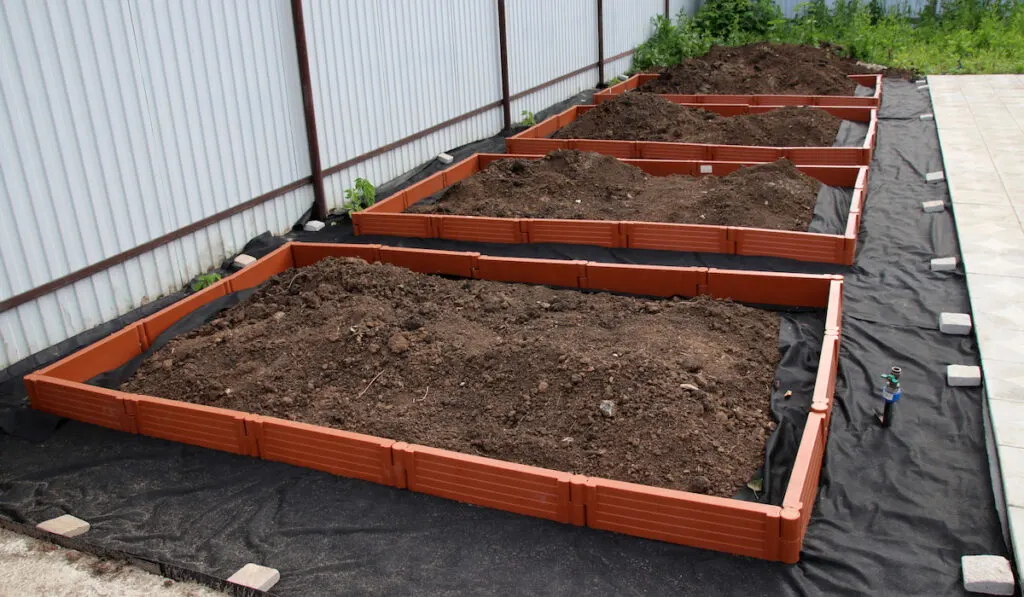
Conclusion
In conclusion, lining raised beds can provide numerous benefits, but it is not always necessary. Before deciding whether or not to use a liner in your raised beds, consider your specific gardening needs and preferences. Evaluate the advantages and disadvantages of using a liner, explore alternative methods, and seek expert advice to make an informed choice. By carefully considering these factors, you can create a successful and thriving garden that meets your goals and aspirations. Happy gardening!

